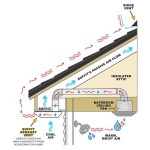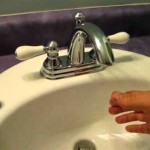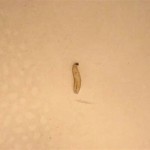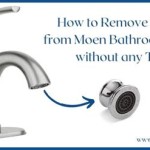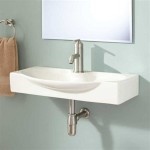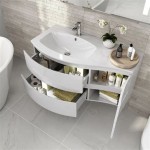```html
Removing Mold and Mildew From Bathroom Walls
Bathrooms, by their very nature, are susceptible to moisture. The combination of heat, humidity, and poor ventilation creates an ideal environment for mold and mildew to thrive. These unwelcome guests not only detract from the aesthetic appeal of a bathroom but can also pose health concerns. Understanding how to effectively remove mold and mildew from bathroom walls is essential for maintaining a clean, healthy, and structurally sound environment.
Mold and mildew are types of fungi. Mildew typically appears as a flat, surface-level growth that can be white, gray, or yellow. It's often found in damp areas and is relatively easy to remove. Mold, on the other hand, can be more deeply rooted and comes in a wider range of colors, including green, black, and brown. Some molds can produce allergens and irritants, and in some cases, produce mycotoxins that can be harmful to human health. Untreated mold and mildew not only cause unsightly stains and odors but can also degrade the materials they grow on, leading to costly repairs. Materials like drywall, grout, and paint are particularly vulnerable.
Identifying Mold and Mildew
The first step in addressing a mold or mildew problem is accurately identifying it. As mentioned earlier, mildew often presents as a light-colored, flat growth on surfaces. A simple test can help distinguish between mildew and dirt: if the discoloration wipes away easily with a damp cloth, it is likely mildew. Mold, however, is often more textured and can penetrate deeper into the surface. Its color variations and potentially musty or earthy odor are also key identifiers. Visual inspection of areas prone to moisture, such as corners, ceilings, and around fixtures, is crucial. Look for discoloration, staining, or a fuzzy appearance.
It's important to note that not all dark stains are mold. Water stains can sometimes mimic the appearance of mold. However, water stains usually lack the textured or fuzzy appearance associated with mold growth. If there is doubt, consulting with a professional mold inspector is advisable, especially when dealing with extensive or recurring growth. Professional testing can also determine the specific type of mold present, which can inform the most effective remediation strategies.
Ignoring mold or mildew growth can lead to more severe problems. The longer these fungi are allowed to proliferate, the more damage they can cause to building materials. In addition, prolonged exposure to mold spores can exacerbate respiratory issues, allergies, and other health concerns. Early detection and prompt removal are critical for preventing both structural damage and potential health risks.
Essential Safety Precautions
Before embarking on any mold or mildew removal project, prioritizing safety is paramount. Mold spores can become airborne during the cleaning process, potentially leading to respiratory irritation or allergic reactions. Therefore, wearing appropriate personal protective equipment (PPE) is essential. This includes:
- A respirator or N-95 mask: Prevents inhalation of mold spores.
- Gloves: Protects skin from contact with mold and cleaning solutions.
- Eye protection: Prevents spores and cleaning solutions from entering the eyes.
- Old clothing: Mold stains can be difficult to remove, so wear clothing that can be discarded or washed separately after the cleaning process.
Ensure adequate ventilation in the bathroom during and after cleaning. Open windows and use a fan to circulate air. This helps to remove airborne spores and reduces the risk of further mold growth. If the area is enclosed or poorly ventilated, consider using an air purifier with a HEPA filter to remove mold spores from the air. When mixing cleaning solutions, always follow the manufacturer's instructions carefully. Never mix bleach with ammonia, as this can create toxic fumes. If using strong chemicals, consider wearing a disposable apron to protect clothing. If feeling unwell during the cleaning process, stop immediately and seek fresh air.
Large infestations of mold (greater than 10 square feet) or mold caused by sewage contamination or other potentially hazardous materials should be addressed by a qualified professional. Attempting to remove such infestations without proper training and equipment can be dangerous and may result in further contamination.
Effective Cleaning Solutions and Techniques
Several effective cleaning solutions can be used to remove mold and mildew from bathroom walls. The choice of solution depends on the severity of the infestation and the type of surface being cleaned.
Bleach Solution: A solution of bleach and water (typically a 1:10 ratio) is a common and effective method for killing mold and mildew on non-porous surfaces such as tile and grout. Apply the solution to the affected area, let it sit for 10-15 minutes, and then scrub thoroughly with a brush or sponge. Rinse well with clean water and dry the surface completely. It is imperative to use caution when using bleach, as it can discolor or damage certain materials and should always be used in a well-ventilated area.
Vinegar: White vinegar is a natural and effective alternative to bleach. It is less harsh and safer to use around children and pets. Spray undiluted white vinegar onto the moldy surface, let it sit for an hour, and then wipe clean with a damp cloth. Vinegar's acidic properties help to kill mold and prevent its regrowth. The odor of vinegar will dissipate relatively quickly.
Baking Soda: Baking soda is another natural cleaning agent that can be used to remove mold and mildew. Mix baking soda with water to form a paste, apply it to the affected area, and let it dry. Then, scrub the area with a brush or sponge and rinse with clean water. Baking soda also helps to absorb odors and is a gentle abrasive, making it effective for scrubbing grout lines.
Tea Tree Oil: Tea tree oil possesses natural antifungal properties. Mix a few drops of tea tree oil with water in a spray bottle. Spray the solution onto the moldy surface, let it sit for an hour, and then wipe clean with a damp cloth. No rinsing is necessary. Tea tree oil has a strong scent, so ensure adequate ventilation.
The cleaning technique is as important as the cleaning solution. When scrubbing mold or mildew, use a brush with stiff bristles to reach into crevices and grout lines. Avoid using excessive force, as this can damage the surface. After cleaning, thoroughly dry the area to prevent further mold growth. Using a fan or dehumidifier can help speed up the drying process. For porous surfaces like drywall, it may be necessary to sand down and repaint the affected area after cleaning. If the mold has penetrated deeply into the drywall, it may need to be replaced.
Preventing Future Growth
Once the mold and mildew have been removed, taking steps to prevent future growth is crucial. The most important factor in preventing mold and mildew is controlling moisture.
Improve Ventilation: Ensure adequate ventilation in the bathroom by opening windows or using an exhaust fan during and after showers or baths. A properly functioning exhaust fan can significantly reduce humidity levels and prevent moisture buildup. If the bathroom lacks an exhaust fan, consider installing one.
Dry Surfaces Thoroughly: After showering or bathing, wipe down wet surfaces, such as shower walls, doors, and countertops. This helps to remove excess moisture and prevent mold from taking hold. Use a squeegee to remove water from shower doors and walls.
Fix Leaks Promptly: Address any leaks promptly, whether they are from faucets, pipes, or the roof. Leaks provide a constant source of moisture that can fuel mold growth. Regularly inspect plumbing and fixtures for signs of leaks and repair them immediately.
Use Mold-Resistant Paint: When painting the bathroom, use mold-resistant paint. These paints contain additives that inhibit the growth of mold and mildew. They are particularly useful for areas prone to moisture, such as walls and ceilings.
Regular Cleaning: Incorporate regular cleaning into the bathroom maintenance routine. Clean surfaces with a mold-killing cleaner on a weekly basis to prevent mold and mildew from taking hold. Pay particular attention to areas prone to moisture, such as shower stalls, grout lines, and corners.
Dehumidifiers: In particularly humid climates or in bathrooms with poor ventilation, using a dehumidifier can help to reduce moisture levels and prevent mold growth. Dehumidifiers remove excess moisture from the air, creating a less favorable environment for mold and mildew.
By addressing the underlying causes of moisture and by implementing preventative measures, it is possible to create a bathroom environment that is less susceptible to mold and mildew growth. Regular maintenance and vigilance are key to keeping the bathroom clean, healthy, and free from these unwanted fungi.
```
Bathroom Ceiling Mold Removal When To Clean Call Branch Environmental

Cleaning Mold From Bathroom Ceilings Like A Pro Lovetoknow

How To Remove Mold From Walls True Value

How To Get Rid Of Mold In Bathroom 2024 Tips From Puroclean

How To Get Rid Of Mold In The Shower On Bathroom Walls Clorox

How To Remove Black Mold From A Bathroom Ceiling

Don T Let Mould Take Over How To Remove It From Your Ceiling

How To Get Rid Of Black Mold In Bathrooms

How Do You Get Rid Of Mould On Bathroom Walls Igloo Surfaces

How Do You Remove Mold From Bathroom Textured Ceiling Hometalk
Related Posts
